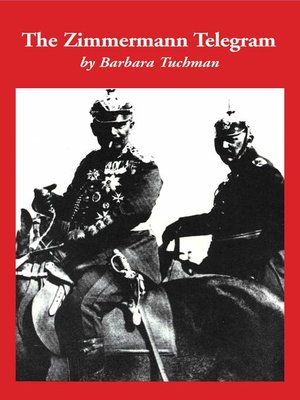
Sign up to save your library
With an OverDrive account, you can save your favorite libraries for at-a-glance information about availability. Find out more about OverDrive accounts.
Find this title in Libby, the library reading app by OverDrive.



Search for a digital library with this title
Title found at these libraries:
| Library Name | Distance |
|---|---|
| Loading... |
For almost three years, President Woodrow Wilson maintained a moral and political neutrality toward World War I, a neutrality that waxed and waned with the flow and consequences of European events. Finally, Wilson had enough. On April 2, 1917, he asked Congress for a declaration of war against Germany and the other Central Powers. Congress obliged. The straw that broke the camel's back was a top secret coded telegram from Germany's foreign minister, Arthur Zimmermann, to Germany's ambassador to the U.S., Count Johann von Bernstorff. The Zimmermann Telegram, and brief 153 code groups within a longer 1,000-group message, was intercepted and decoded by a British intelligence team commanded by the legendary Admiral Sir William 'Blinker' Hall. The message was simple enough: Germany was going to institute unrestricted submarine warfare, and also wanted an alliance with Mexico and Japan; if Mexico agreed and would launch a subsequent military attack on the United States, Germany would see that Mexico got Texas, Arizona and New Mexico back. The story of how that telegram came to be formulated, sent, intercepted, decoded and delivered from Blinker Hall to Woodrow Wilson is a thrilling story that went back more than three years, and encompassed an almost unbelievable array of exciting cloak-and-dagger activities.







